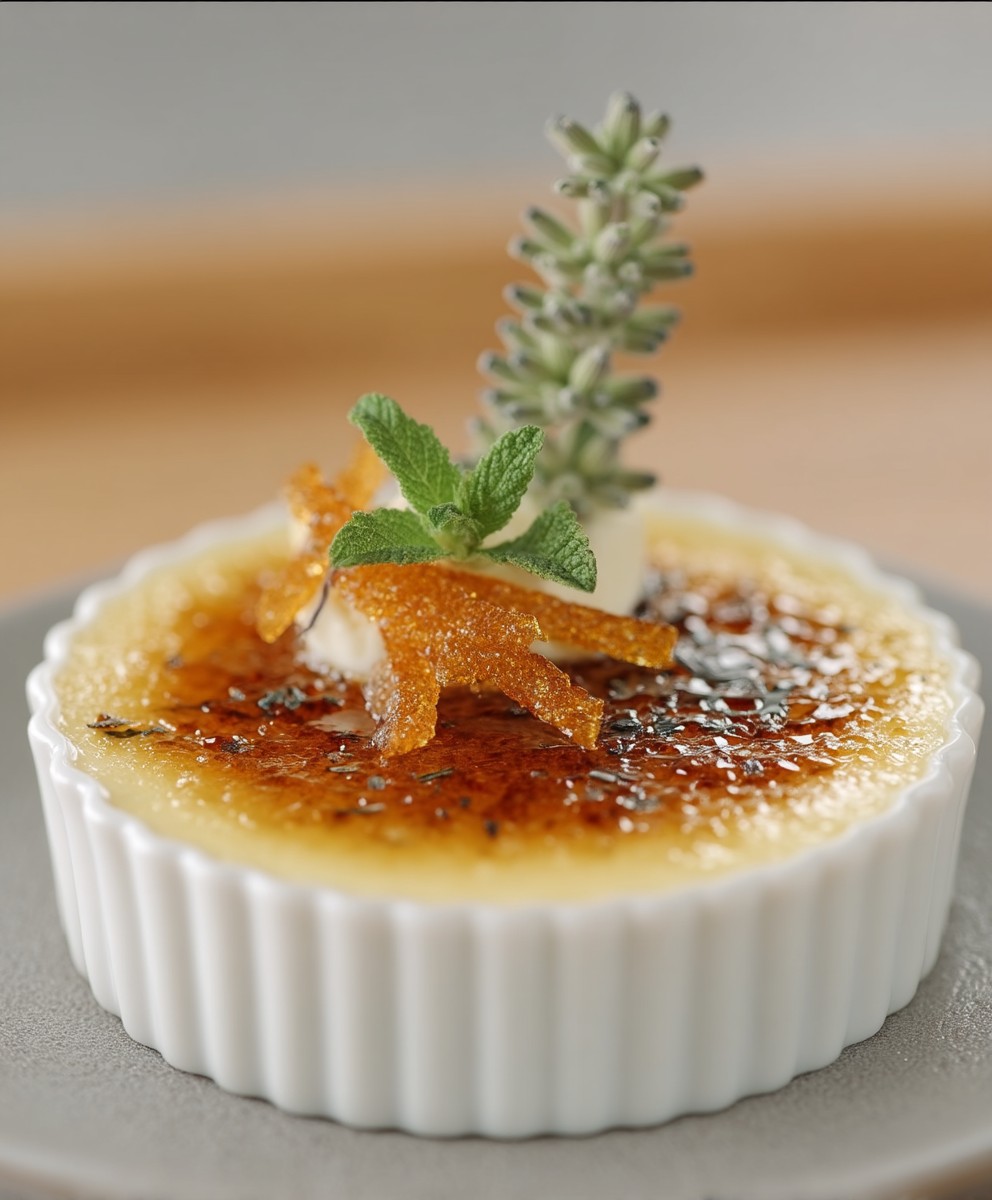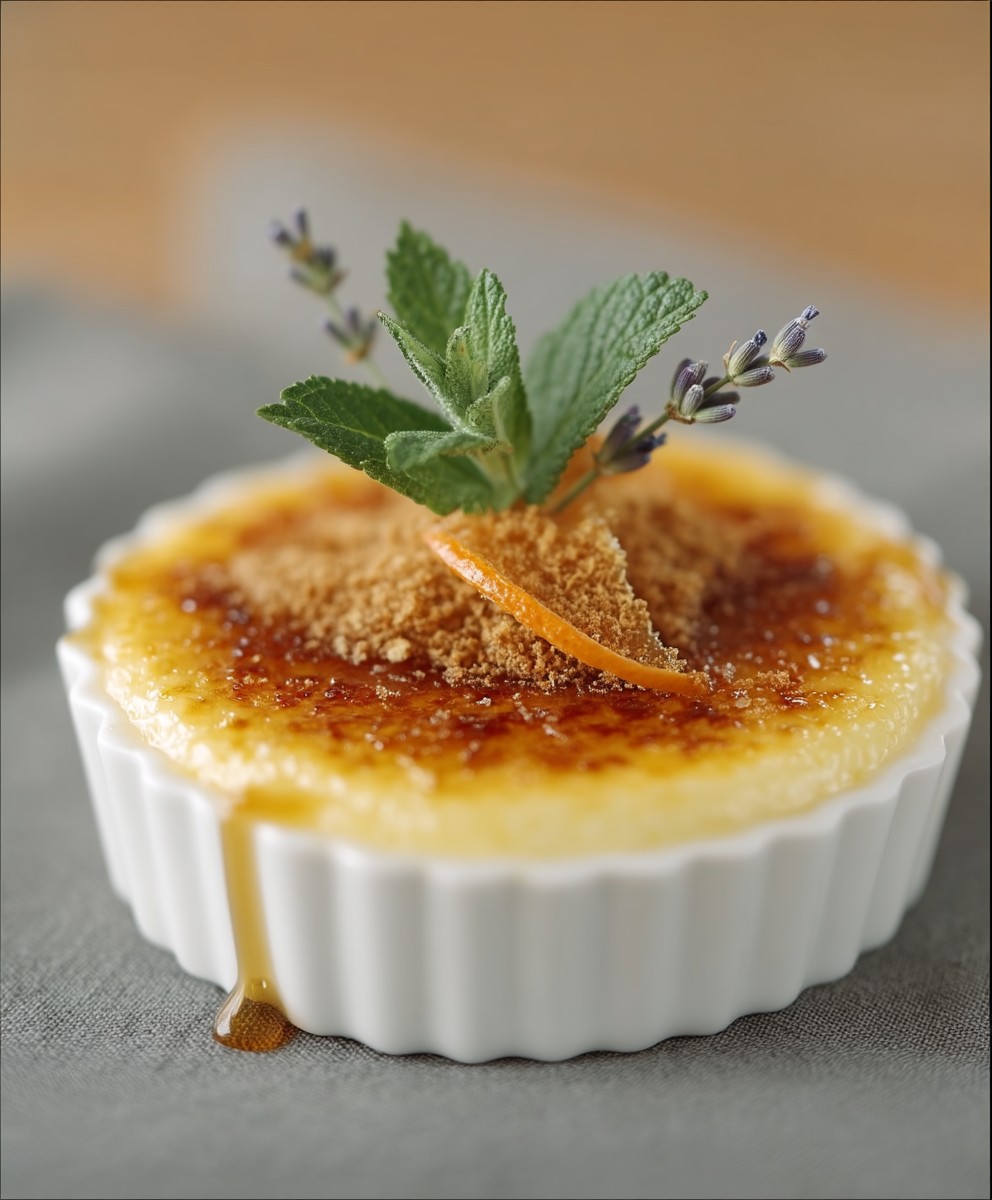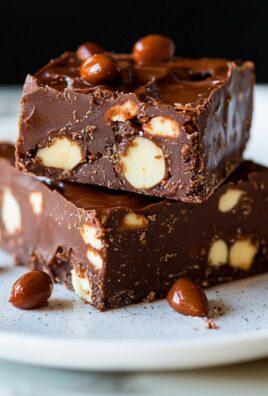Lavender Creme Brulee: just the name conjures images of elegant desserts and sophisticated palates, doesn’t it? But don’t let the fancy name intimidate you! I’m here to show you how surprisingly simple it is to create this restaurant-worthy treat in your very own kitchen. Imagine the satisfying crack of the caramelized sugar topping giving way to a smooth, creamy custard infused with the delicate floral notes of lavender. It’s a sensory experience unlike any other!
Creme brulee, meaning “burnt cream” in French, has a rich history dating back to the 17th century. While its exact origins are debated, it’s undeniably a classic French dessert, traditionally flavored with vanilla. My twist, the addition of lavender, elevates this timeless dessert to a new level of aromatic bliss. Lavender has been used in culinary applications for centuries, particularly in Provence, France, where it grows abundantly. Its subtle, slightly sweet flavor pairs beautifully with the richness of the custard.
People adore creme brulee for its contrasting textures and flavors. The crisp, brittle sugar topping provides a delightful counterpoint to the velvety smooth custard underneath. The creamy texture is incredibly satisfying, and the subtle sweetness is perfectly balanced. Adding Lavender Creme Brulee to your dessert repertoire is a guaranteed way to impress your guests. Plus, it can be made ahead of time, leaving you free to enjoy your evening. So, are you ready to embark on this culinary adventure with me? Let’s get started!
Ingredients:
- 1 quart (4 cups) heavy cream
- 1 vanilla bean, split lengthwise and seeds scraped
- 1/4 cup dried culinary lavender buds
- 6 large egg yolks
- 1/2 cup granulated sugar, plus more for brûléeing
- Pinch of salt
- Optional: Lavender extract (1/4 teaspoon) for enhanced flavor
Infusing the Cream:
- In a heavy-bottomed saucepan, combine the heavy cream, vanilla bean pod and seeds, and dried lavender buds.
- Place the saucepan over medium heat and bring the mixture to a simmer. Watch carefully, as you don’t want it to boil over. A simmer is when small bubbles start to form around the edges of the pan.
- Once simmering, remove the saucepan from the heat, cover it, and let it steep for at least 30 minutes, or up to 1 hour, to allow the lavender and vanilla flavors to fully infuse into the cream. The longer it steeps, the stronger the lavender flavor will be. I usually go for the full hour for a pronounced lavender taste.
- After steeping, strain the cream mixture through a fine-mesh sieve lined with cheesecloth (if you have it, otherwise just the sieve is fine) into a clean bowl. This will remove the lavender buds and vanilla bean pod, leaving you with a smooth, infused cream. Discard the solids.
Preparing the Custard Base:
- Preheat your oven to 300°F (150°C). It’s important to have a low and slow oven temperature to ensure the custard sets properly without curdling.
- In a separate medium-sized bowl, whisk together the egg yolks, granulated sugar, and salt until the mixture is pale yellow and slightly thickened. This usually takes about 2-3 minutes of vigorous whisking. You want to incorporate air into the mixture, but not so much that it becomes foamy.
- Slowly temper the hot cream into the egg yolk mixture. This is a crucial step to prevent the eggs from scrambling. Gradually pour a small amount of the hot cream into the egg yolk mixture while whisking constantly. Continue adding the cream in a slow, steady stream, whisking continuously until all of the cream is incorporated.
- If you’re using lavender extract, add it now and whisk to combine. Be careful not to add too much, as it can easily overpower the other flavors.
- Pour the custard mixture through a fine-mesh sieve into a pitcher or measuring cup with a spout. This will remove any stray bits of cooked egg or undissolved sugar, resulting in a smoother final product.
Baking the Crème Brûlée:
- Arrange ramekins (usually 6-8, depending on size) on a baking pan with sides. I prefer using shallow, wide ramekins for a better brûlée-to-custard ratio.
- Carefully pour the custard mixture into the ramekins, filling them almost to the top.
- Pour hot water into the baking pan to create a water bath (bain-marie). The water should come about halfway up the sides of the ramekins. This helps the custards cook evenly and prevents them from cracking.
- Carefully transfer the baking pan to the preheated oven.
- Bake for 40-50 minutes, or until the custards are set around the edges but still slightly wobbly in the center. The internal temperature should reach about 170-175°F (77-79°C). A slight jiggle is okay; they will continue to set as they cool.
- Remove the baking pan from the oven and carefully remove the ramekins from the water bath. Let them cool slightly on the counter before transferring them to the refrigerator.
- Refrigerate the crème brûlée for at least 4 hours, or preferably overnight, to allow them to chill completely and set fully. This is important for achieving the right texture and preventing the custard from being too runny.
Brûléeing the Sugar:
- Before serving, remove the crème brûlée from the refrigerator and let them sit at room temperature for about 15-20 minutes. This will help the sugar melt more evenly.
- Sprinkle a thin, even layer of granulated sugar over the top of each custard. Use enough sugar to completely cover the surface, but not so much that it forms a thick layer. About 1-2 teaspoons per ramekin is usually sufficient.
- Using a kitchen torch, carefully caramelize the sugar. Hold the torch a few inches away from the surface of the sugar and move it in a circular motion until the sugar melts and turns a deep golden brown color. Be careful not to burn the sugar, as it will become bitter. If you don’t have a kitchen torch, you can use the broiler in your oven. Place the ramekins on a baking sheet and broil them for a few minutes, watching them very closely, until the sugar is caramelized.
- Let the brûléed sugar cool and harden for a few minutes before serving. The sugar will crackle when you tap it with a spoon.
- Serve immediately and enjoy the contrast between the cold, creamy custard and the warm, crunchy sugar topping.
Tips for Success:
- Use high-quality ingredients: The flavor of crème brûlée is simple and elegant, so using the best quality ingredients will make a big difference.
- Don’t overbake: Overbaked crème brûlée will be curdled and dry. The custards should be set around the edges but still slightly wobbly in the center when they are done.
- Chill thoroughly: Chilling the crème brûlée for at least 4 hours, or preferably overnight, is essential for achieving the right texture.
- Brûlée just before serving: The caramelized sugar topping will soften if it sits for too long, so it’s best to brûlée the crème brûlée just before serving.
- Experiment with flavors: While this recipe is for lavender crème brûlée, you can easily adapt it to other flavors by infusing the cream with different herbs, spices, or extracts. For example, you could try infusing the cream with Earl Grey tea, cardamom, or orange zest.
Troubleshooting:
- Custard is curdled: This usually happens when the custard is overbaked or the eggs are scrambled during the tempering process. Make sure to use a low oven temperature and temper the cream slowly and carefully.
- Custard is too runny: This usually happens when the custard is underbaked or not chilled long enough. Make sure to bake the custards until they are set around the edges but still slightly wobbly in the center, and chill them for at least 4 hours.
- Sugar is burning: This usually happens when the torch is held too close to the sugar or the sugar is heated for too long. Hold the torch a few inches away from the surface of the sugar and move it in a circular motion until the sugar melts and turns a deep golden brown color.
- Sugar is not caramelizing evenly: This usually happens when the sugar is not spread evenly over the top of the custard. Make sure to sprinkle a thin, even layer of sugar over the entire surface.
Variations:
- Vanilla Bean Crème Brûlée: Omit the lavender buds and use only the vanilla bean for a classic vanilla flavor.
- Chocolate Crème Brûlée: Add 2 ounces of melted bittersweet chocolate to the custard base after tempering the cream.
- Citrus Crème Brûlée: Infuse the cream with citrus zest, such as lemon, orange, or grapefruit.
- Espresso Crème Brûlée: Add 1-2 tablespoons of espresso powder to the custard base after tempering the cream.

Conclusion:
This Lavender Crème brûlée isn’t just a dessert; it’s an experience. The delicate floral notes of lavender, perfectly balanced with the rich, creamy custard and the satisfying crack of the caramelized sugar, create a symphony of flavors and textures that will tantalize your taste buds. It’s elegant enough for a special occasion, yet simple enough to whip up for a weeknight treat when you need a little something special. Trust me, once you try it, you’ll understand why I’m so passionate about this recipe.
Why is this a must-try? Because it’s unique, sophisticated, and surprisingly easy to make. You don’t need to be a professional pastry chef to achieve that perfect, restaurant-quality crème brûlée. The lavender infusion adds a touch of magic, transforming a classic dessert into something truly extraordinary. It’s a guaranteed crowd-pleaser, and it’s a fantastic way to impress your friends and family with your culinary skills. Plus, the aroma of lavender filling your kitchen as it bakes is simply divine!
But the best part? It’s incredibly versatile! While I adore the classic lavender flavor, feel free to experiment with variations. For a citrusy twist, add a teaspoon of lemon or orange zest to the custard mixture. If you’re a chocolate lover, swirl in a tablespoon of melted dark chocolate before baking. Or, for a more subtle floral note, try using rosewater instead of lavender. The possibilities are endless!
Serving Suggestions:
* Serve chilled, straight from the refrigerator, for the most refreshing experience.
* Garnish with fresh berries, such as raspberries or blueberries, for a pop of color and flavor.
* A sprig of fresh lavender adds a beautiful and aromatic touch.
* Pair it with a glass of dessert wine, such as Sauternes or Moscato d’Asti, for a truly decadent treat.
* For a fun twist, try using different types of sugar for the caramelized topping, such as turbinado or brown sugar.
Variations to Explore:
* Honey Lavender Crème Brûlée: Substitute some of the sugar with honey for a richer, more complex flavor.
* Lavender Vanilla Crème Brûlée: Add a teaspoon of vanilla extract to the custard mixture for a classic combination.
* Earl Grey Lavender Crème Brûlée: Infuse the cream with Earl Grey tea bags along with the lavender for a unique and aromatic flavor profile.
* Vegan Lavender Crème Brûlée: Use coconut milk or cashew cream instead of heavy cream for a dairy-free version.
I’m so excited for you to try this Lavender Crème brûlée recipe! I truly believe it will become a new favorite in your household. Don’t be intimidated by the fancy name; it’s much simpler to make than you might think. The key is to use high-quality ingredients and to follow the instructions carefully.
So, go ahead, gather your ingredients, and get ready to create a little bit of magic in your kitchen. And please, don’t forget to share your experience with me! I’d love to hear what you think of the recipe, what variations you tried, and how you served it. You can leave a comment below, tag me on social media, or send me an email. I can’t wait to see your beautiful creations! Happy baking!
Lavender Creme Brulee: A Decadent & Easy Recipe
Creamy, vanilla custard infused with delicate lavender notes, topped with a crisp, caramelized sugar crust.
Ingredients
- 1 quart (4 cups) heavy cream
- 1 vanilla bean, split lengthwise and seeds scraped
- 1/4 cup dried culinary lavender buds
- 6 large egg yolks
- 1/2 cup granulated sugar, plus more for brûléeing
- Pinch of salt
- Optional: Lavender extract (1/4 teaspoon) for enhanced flavor
Instructions
- In a heavy-bottomed saucepan, combine the heavy cream, vanilla bean pod and seeds, and dried lavender buds.
- Place the saucepan over medium heat and bring the mixture to a simmer. Watch carefully, as you don’t want it to boil over. A simmer is when small bubbles start to form around the edges of the pan.
- Once simmering, remove the saucepan from the heat, cover it, and let it steep for at least 30 minutes, or up to 1 hour, to allow the lavender and vanilla flavors to fully infuse into the cream. The longer it steeps, the stronger the lavender flavor will be.
- After steeping, strain the cream mixture through a fine-mesh sieve lined with cheesecloth (if you have it, otherwise just the sieve is fine) into a clean bowl. This will remove the lavender buds and vanilla bean pod, leaving you with a smooth, infused cream. Discard the solids.
- Preheat your oven to 300°F (150°C). It’s important to have a low and slow oven temperature to ensure the custard sets properly without curdling.
- In a separate medium-sized bowl, whisk together the egg yolks, granulated sugar, and salt until the mixture is pale yellow and slightly thickened. This usually takes about 2-3 minutes of vigorous whisking. You want to incorporate air into the mixture, but not so much that it becomes foamy.
- Slowly temper the hot cream into the egg yolk mixture. This is a crucial step to prevent the eggs from scrambling. Gradually pour a small amount of the hot cream into the egg yolk mixture while whisking constantly. Continue adding the cream in a slow, steady stream, whisking continuously until all of the cream is incorporated.
- If you’re using lavender extract, add it now and whisk to combine. Be careful not to add too much, as it can easily overpower the other flavors.
- Pour the custard mixture through a fine-mesh sieve into a pitcher or measuring cup with a spout. This will remove any stray bits of cooked egg or undissolved sugar, resulting in a smoother final product.
- Arrange ramekins (usually 6-8, depending on size) on a baking pan with sides.
- Carefully pour the custard mixture into the ramekins, filling them almost to the top.
- Pour hot water into the baking pan to create a water bath (bain-marie). The water should come about halfway up the sides of the ramekins. This helps the custards cook evenly and prevents them from cracking.
- Carefully transfer the baking pan to the preheated oven.
- Bake for 40-50 minutes, or until the custards are set around the edges but still slightly wobbly in the center. The internal temperature should reach about 170-175°F (77-79°C). A slight jiggle is okay; they will continue to set as they cool.
- Remove the baking pan from the oven and carefully remove the ramekins from the water bath. Let them cool slightly on the counter before transferring them to the refrigerator.
- Refrigerate the crème brûlée for at least 4 hours, or preferably overnight, to allow them to chill completely and set fully. This is important for achieving the right texture and preventing the custard from being too runny.
- Before serving, remove the crème brûlée from the refrigerator and let them sit at room temperature for about 15-20 minutes. This will help the sugar melt more evenly.
- Sprinkle a thin, even layer of granulated sugar over the top of each custard. Use enough sugar to completely cover the surface, but not so much that it forms a thick layer. About 1-2 teaspoons per ramekin is usually sufficient.
- Using a kitchen torch, carefully caramelize the sugar. Hold the torch a few inches away from the surface of the sugar and move it in a circular motion until the sugar melts and turns a deep golden brown color. Be careful not to burn the sugar, as it will become bitter. If you don’t have a kitchen torch, you can use the broiler in your oven. Place the ramekins on a baking sheet and broil them for a few minutes, watching them very closely, until the sugar is caramelized.
- Let the brûléed sugar cool and harden for a few minutes before serving. The sugar will crackle when you tap it with a spoon.
- Serve immediately and enjoy the contrast between the cold, creamy custard and the warm, crunchy sugar topping.
Notes
- Use high-quality ingredients for the best flavor.
- Don’t overbake the crème brûlée; it should be set around the edges but still slightly wobbly in the center.
- Chill thoroughly for at least 4 hours, or preferably overnight.
- Brûlée the sugar just before serving to prevent it from softening.
- Experiment with other flavors by infusing the cream with different herbs, spices, or extracts.






Leave a Comment